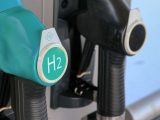
Innovative Fuel Cells Set to Electrify West Virginia Homes
July 21, 2023WATT Fuel Cell has partnered with Hope Gas to bring clean, reliable power to residential homes.
WATT Fuel Cell recently announced that it will be supplying 500 residential Imperium® Solid Oxide Fuel Cells (SOFC) to West Virginia-based natural gas utility Hope Gas, to provide clean power to Hope Gas customers in the state.
The SOFCs will provide quiet electrical power that is free of pollution.
The Imperium® SOFCs have been sized to provide an average home with electrical power that is quiet and pollution-free. WATT’s fuel cells will be powered by natural gas and will run “in parallel” with the commercial power grid.
CEO and founder of WATT, Caine Finnerty, explained in a recent news release from the company that running “in parallel” with the electrical grid means if home power demand increases beyond the fuel cell’s 1.5 kilowatt (kW) capacity, the additional power needed to meet the power demand will come from the electrical grid. If the grid is down, the fuel cell’s power capacity will stay secure, ensuring the customer is never without power due to grid interruption.
running “in parallel” with the electrical grid means if home power demand increases beyond the fuel cell’s 1.5 kilowatt (kW) capacity, the additional power needed to meet the power demand will come from the electrical grid. If the grid is down, the fuel cell’s power capacity will stay secure, ensuring the customer is never without power due to grid interruption.
According to WATT, the technology it uses for its fuel cells is simple in design. They were made to be reliable and highly efficient, with fuel and air directly converted to electric power through an electrochemical process. The Imperium® SOFCs do not rely solely on pure hydrogen for fuel. Instead, they produce electric power by drawing hydrogen molecules from natural gas that is readily available. As such, the power generation process needs no combustion and is nearly free of emissions.
In terms of emissions, Finnerty notes that the power generated by the fuel cell is, unit for unit, at minimum 50% cleaner than power from the grid. “WATT’s completely catalytic system eliminates NOx and SOx, hydrocarbon slip, and particulates,” the CEO said.
The fuel cells can help West Virginia with its power reliability problems.
West Virginia has one of the least reliable electric services in the country, with outages reportedly occurring at four or five times the national average. The state’s distribution grid is the main source of these problems. Rural and mountainous regions experience the greatest reliability problems, due to dense forests damaging vulnerable power lines and making it difficult for maintenance crews to access the areas.

“Our partnership with Hope Gas is bringing a resilient, cleaner power generation technology to West Virginia homeowners,” said Finnerty.
Sufficient on-site power.
 WATT’s fuel cells will be offered to Hope Gas residential customers. The utility currently serves over 112,000 customers in 35 West Virginia counties. The new 1.5 kW fuel cells will be installed by Hope Gas and are designed to continuously operate in a customer’s home. As a typical home consumes approximately 1.2 kW of power a day on average, the on-site power generated by SOFCs should be sufficient for most needs.
WATT’s fuel cells will be offered to Hope Gas residential customers. The utility currently serves over 112,000 customers in 35 West Virginia counties. The new 1.5 kW fuel cells will be installed by Hope Gas and are designed to continuously operate in a customer’s home. As a typical home consumes approximately 1.2 kW of power a day on average, the on-site power generated by SOFCs should be sufficient for most needs.
Those who have the fuel cell power units installed will immediately have energy security in the event grid problems or storms disrupt power. Wide adoption of the technology is also expected to help the state transition away from coal power.
FAQs about WATT Fuel Cell and Hope Gas Residential Power Partnership
- What is the partnership between WATT Fuel Cell and Hope Gas about? WATT Fuel Cell has partnered with Hope Gas to supply 500 residential Imperium® Solid Oxide Fuel Cells (SOFC) to West Virginia-based natural gas utility, Hope Gas. These SOFCs will provide clean, quiet electrical power to Hope Gas customers in the state.
- What are the benefits of using Imperium® SOFCs? The Imperium® SOFCs generate quiet, pollution-free electrical power. They have been sized to provide an average home with sufficient power. Additionally, they run “in parallel” with the commercial power grid, meaning that if home power demand exceeds the fuel cell’s capacity, additional power can be drawn from the grid. If the grid is down, the fuel cell’s power capacity stays secure, ensuring a constant power supply.
- How does the technology used in WATT’s fuel cells work? WATT’s fuel cells use a simple but highly efficient design. Fuel and air are directly converted to electric power through an electrochemical process. The Imperium® SOFCs draw hydrogen molecules from readily available natural gas, eliminating the need for pure hydrogen fuel. This power generation process requires no combustion and is nearly free of emissions.
- How clean is the power generated by these fuel cells? According to WATT, the power generated by their fuel cells is at least 50% cleaner than grid power. Their completely catalytic system eliminates NOx and SOx, hydrocarbon slip, and particulates.
- How can this partnership benefit West Virginia? West Virginia has one of the least reliable electric services in the U.S., with outages occurring four or five times the national average. The partnership between WATT and Hope Gas aims to bring resilient, cleaner power generation technology to West Virginia homeowners, improving power reliability, especially in rural and mountainous regions.
- Who will be offered WATT’s fuel cells? WATT’s fuel cells will be offered to Hope Gas residential customers, who currently serve over 112,000 customers in 35 West Virginia counties. The new 1.5 kW fuel cells will be installed by Hope Gas and are designed to continuously operate in a customer’s home.
- What is the capacity of these fuel cells and is it sufficient for a typical home? The new 1.5 kW fuel cells are designed to continuously operate in a customer’s home. As a typical home consumes approximately 1.2 kW of power a day on average, the on-site power generated by SOFCs should be sufficient for most needs.
- What happens if there are grid problems or storms? Those who have the fuel cell power units installed will immediately have energy security in the event grid problems or storms disrupt power. Wide adoption of the technology is also expected to help the state transition away from coal power.
- What is a fuel cell and how does it work? A fuel cell is an electrochemical device that generates electricity through a chemical reaction rather than combustion. It combines hydrogen and oxygen to produce electricity, with water and heat as by-products. Here’s a step-by-step explanation of how a fuel cell works:Ready to test your knowledge on the most abundant element in the universe? Take our fun and engaging Hydrogen Quiz now! [forminator_quiz id=”58712″]



 With over 15 years of reporting hydrogen news, we are your premier source for the latest updates and insights in hydrogen and renewable energy.
With over 15 years of reporting hydrogen news, we are your premier source for the latest updates and insights in hydrogen and renewable energy.
I live in New Jersey, and am a fuel cell fan, and have been for years.
How do I get a fuel sell for my home?
3 questions:
1) What is the fuel consumption rate? Constant or min / max?
2) Can the fuel cell run on Propane?
3) Is this available in all states? AZ?
This sounds quite good but appears to be an interim solution. The article is not clear about if the system actually consumes the gas used. If it does, the poor home owner is once again facing significant cost increases for their power supply. Governments always promise to LOWER power costs but it never happens.
kW is the level of energy not the amount to be consumed..that is called kWhr..so if the average level a home is using at 1.2 kW for 24 hrs/day, than the averate home needs 28.8 kWhr/day that is very high..so better to reduce average consumption first..than provide local production of H2 too by electrolysing water using solar energy..(and study basic physics before addressing any energy issues..).
Wonder if the fuel cell emits CO2 as it’s purported to run on natural gas a hydrocarbon.
Alicia – interesting article, thanks.
A couple of suggestions:
*Please correct it to note that their home’s average power requirement is 1.2 kW, not “1.2 kW a day”. I think that’s what is meant.
*Note that if their fuel-celled home has air conditioning, it will need power from the grid whenever the a/c or another big power user is running, regardless (even a small window A/C unit needs more power (to start the compressor) than their system’s 1.5 kW maximum). That means that the A/C will not run when the grid fails, a problem in hot country since the grid typically fails during peak afternoon A/C use. (1.5 kW will run a small house if the A/C, oven, electric stove or clothes dryer is not running.)
*Some of the language provided by the utility feels a bit slippery: “..eliminates NOx and SOx, hydrocarbon slip, and particulates.”, for example. I suppose that “hydrocarbon slip” might mean natural gas leakage, but it’s not a common term so I can’t say. There’s little natural gas leakage from a decent furnace or whatever they’re thinking of, but I don’t think that’s what they’re after. What they’re perhaps implying by obfuscation may be that it eliminates CO2 release. If that’s the case, we need to know what happens to the unused carbon (after the H is extracted to make electricity). If there is no oxidation of the natural gas’s carbon content, where does the carbon go?
It would be good to find out what they mean by “hydrocarbon slip”, and where the carbon (the majority of natural gas’s energy value) ends up.
*Note: I’m not saying that a free 1.5 kW fuel cell, plus the gadgetry needed to autoswitch when the grid fails, wouldn’t be welcome, just that they may be overselling and underiniforming a bit to get the headline.